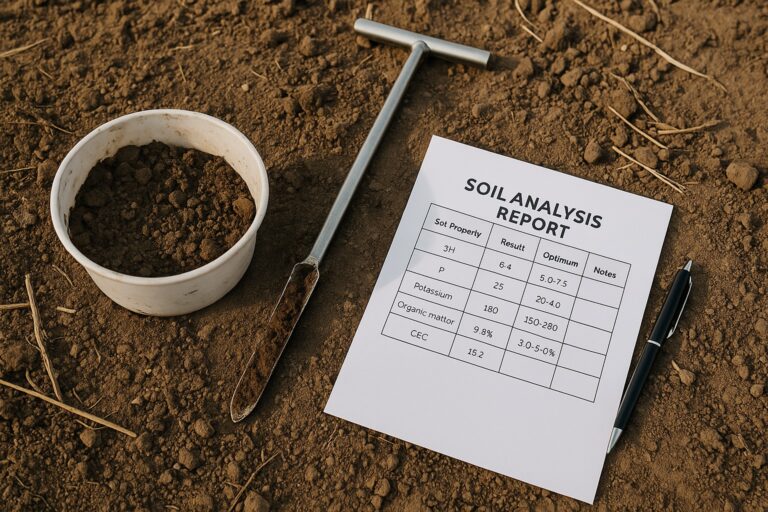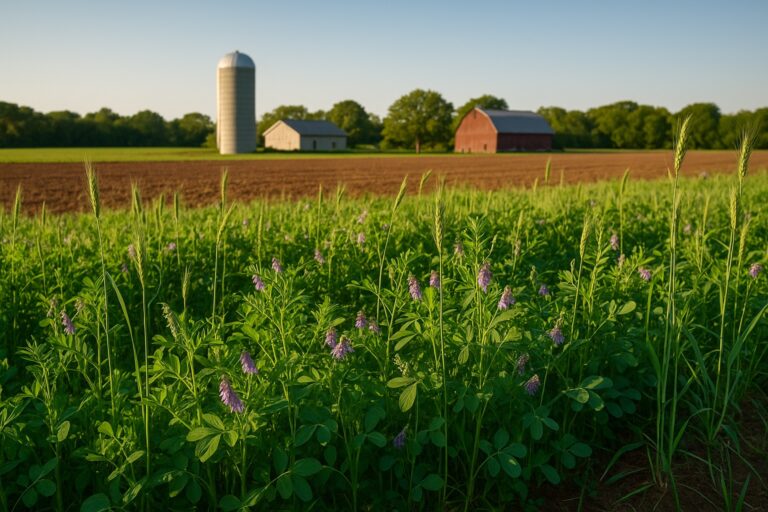Anúncios
The agriculture sector is on the brink of major transformation. Over the next decade, shifting consumer demands, rapid technological innovation, and a changing climate will reshape how we grow food, raise livestock, and manage natural resources. For U.S. farmers, staying informed and adaptive will be key to thriving in this new era.
While some challenges may seem daunting, the future of agriculture also presents unprecedented opportunities. Innovations in precision farming, biotechnology, and digital tools can lead to smarter and more sustainable practices—boosting productivity while reducing environmental impact.
If you’re a farmer aiming to future-proof your operations, this guide is for you. Let’s explore what lies ahead, what changes to expect, and what practical steps you can start taking today to remain competitive, resilient, and successful.
Understanding the Current Agricultural Landscape
Before we can predict the future, it’s essential to understand where agriculture stands today. The U.S. remains one of the world’s top food producers, thanks to its vast land resources, advanced technology, and skilled labor force. However, the industry faces multiple pressures: aging farmers, rising input costs, land degradation, and increasingly unpredictable weather.
Moreover, global trade tensions and fluctuating commodity prices are prompting farmers to diversify income streams and explore alternative crops or revenue models. At the same time, consumer expectations around sustainability, transparency, and food origin are pushing the sector toward more responsible practices.
In this transitional moment, agriculture is at a crossroads—demanding both innovation and preservation of core farming values.
Key Technological Advancements Transforming Agriculture
The next 10 years will see the full integration of advanced technologies into everyday farming operations. Here are the most impactful technologies reshaping the future of agriculture:
- Drones and aerial imagery: These tools allow farmers to monitor crop health, irrigation needs, and pest infestations in real-time.
- IoT and sensor technology: In-field sensors deliver detailed environmental data that improve decision-making.
- Automation and robotics: Autonomous tractors and robotic harvesters reduce labor dependency and improve efficiency.
- Artificial intelligence (AI): Predictive analytics help optimize planting schedules, pest management, and resource allocation.
- Biotechnology: Gene editing and improved crop varieties offer greater yields, drought resistance, and disease tolerance.
Adopting these tools is becoming more accessible—even for small and mid-size farms—through cooperative models and shared service platforms.
Climate Change and Its Impacts on Farming
One of the most significant challenges agriculture will face is climate change. Rising temperatures, shifting rainfall patterns, and more frequent extreme weather events are already affecting planting schedules, soil health, and water availability.
For example, extended droughts in the western U.S. and floods in the Midwest have shown the urgent need for climate-resilient farming systems. Over the next decade, adaptive measures will include:
- Diversifying crops to reduce dependency on vulnerable varieties.
- Investing in soil health through cover cropping and conservation tillage.
- Improving irrigation systems to reduce water waste.
- Using climate forecasting tools for better risk management.
Farmers who proactively adjust their practices now will be better equipped to deal with climate volatility in the future.
Shifts in Consumer Demand and Food Systems
Consumer preferences are rapidly changing, and farmers need to respond. Increasingly, people are looking for:
- Locally grown produce
- Organic and non-GMO options
- Transparent supply chains
- Regenerative and carbon-neutral farming practices
In response, retailers and food companies are tightening sustainability requirements for suppliers. For farmers, this means exploring certifications, engaging in direct-to-consumer sales, or participating in cooperatives that meet these evolving standards.
The push for plant-based diets and alternative proteins (like lab-grown meat and insect protein) may also affect livestock operations and feed crop demand.
The Role of Data and Precision Agriculture
Precision agriculture, driven by data, will be one of the strongest trends in the next 10 years. It empowers farmers to:
- Apply fertilizers and pesticides only where needed
- Monitor moisture levels and avoid over-irrigation
- Predict crop yields and market fluctuations
By using platforms that integrate satellite imagery, soil sensors, and real-time analytics, farmers can make more informed and profitable decisions. These tools also contribute to traceability, which is becoming a key requirement in food safety and supply chain transparency.
Farms that embrace data-driven strategies will improve productivity, reduce costs, and gain a competitive edge.
Sustainability and Regenerative Farming Practices
Sustainability will no longer be optional—it will be a defining factor of a farm’s long-term viability. Over the next decade, there will be an increased shift toward regenerative agriculture, which includes:
- Crop rotation to preserve soil nutrients
- Agroforestry to enhance biodiversity
- No-till farming to reduce erosion
- Composting to recycle organic waste
Not only do these practices improve soil health and reduce emissions, but they also attract incentives and grants from both private and public sectors. For example, the USDA’s Climate-Smart Agriculture programs are expected to expand funding for regenerative projects.
Policy, Trade, and Global Market Dynamics
Policy will play a major role in shaping the agricultural landscape. Upcoming Farm Bills will likely increase support for conservation practices, beginning farmers, and rural infrastructure.
Trade agreements and tariffs will continue to impact commodity pricing and export opportunities. Farmers need to stay informed on:
- U.S.-China trade relations
- New trade partnerships in Latin America and Asia
- Export restrictions and import regulations for specialty crops
Increased focus on food security at a national level may also drive more domestic investment into agri-tech and innovation hubs.
Skills and Workforce of the Future
The farmer of the future will be part grower, part technician, and part entrepreneur. As agriculture becomes more digital, the demand for new skills will rise. This includes:
- Data analysis and management
- Tech equipment operation and maintenance
- Marketing and e-commerce
- Understanding regulatory compliance
Apprenticeships, online training, and community college programs are already being developed to prepare the next generation of agri-professionals. Farms that invest in workforce development will not only retain talent but also stay ahead of innovation curves.
Actionable Strategies for Farmers Today
So what can farmers do now to prepare for the decade ahead? Here are some practical steps:
- Start small with tech – Pilot one or two precision tools before scaling up.
- Build soil health – Transition to regenerative practices with measurable goals.
- Diversify income – Explore agritourism, value-added products, or energy generation (e.g., solar).
- Strengthen networks – Join cooperatives or partnerships that provide access to knowledge and markets.
- Stay informed – Subscribe to agricultural newsletters, attend webinars, and engage in industry groups.
These actions don’t require a complete overhaul, but rather a strategic mindset and willingness to adapt over time.
Conclusion
The future of agriculture in the U.S. is filled with both complexity and promise. By embracing innovation, prioritizing sustainability, and investing in new skills, farmers can lead the way into a more resilient, profitable, and responsible era of food production.
The next 10 years will reward those who are proactive, informed, and open to change. Agriculture has always been about working with nature—and now, more than ever, it’s about working with the future.
FAQs
1. What is the biggest challenge farmers will face in the next 10 years?
Climate change will likely be the most pressing challenge, affecting crop cycles, water availability, and pest patterns.
2. How can small farms adopt expensive technology?
Through shared services, cooperatives, and government grants that reduce costs and improve access to tools.
3. Will demand for organic and sustainable food continue to grow?
Yes. Consumer awareness is rising, and many major retailers are expanding their sustainable product lines.
4. How should farmers prepare for changes in trade policies?
By diversifying crops, staying updated on regulations, and exploring domestic markets to reduce export dependency.
5. Is regenerative agriculture really profitable?
Yes, especially long-term. It improves soil health, reduces input costs, and can qualify for incentives and premium markets.



